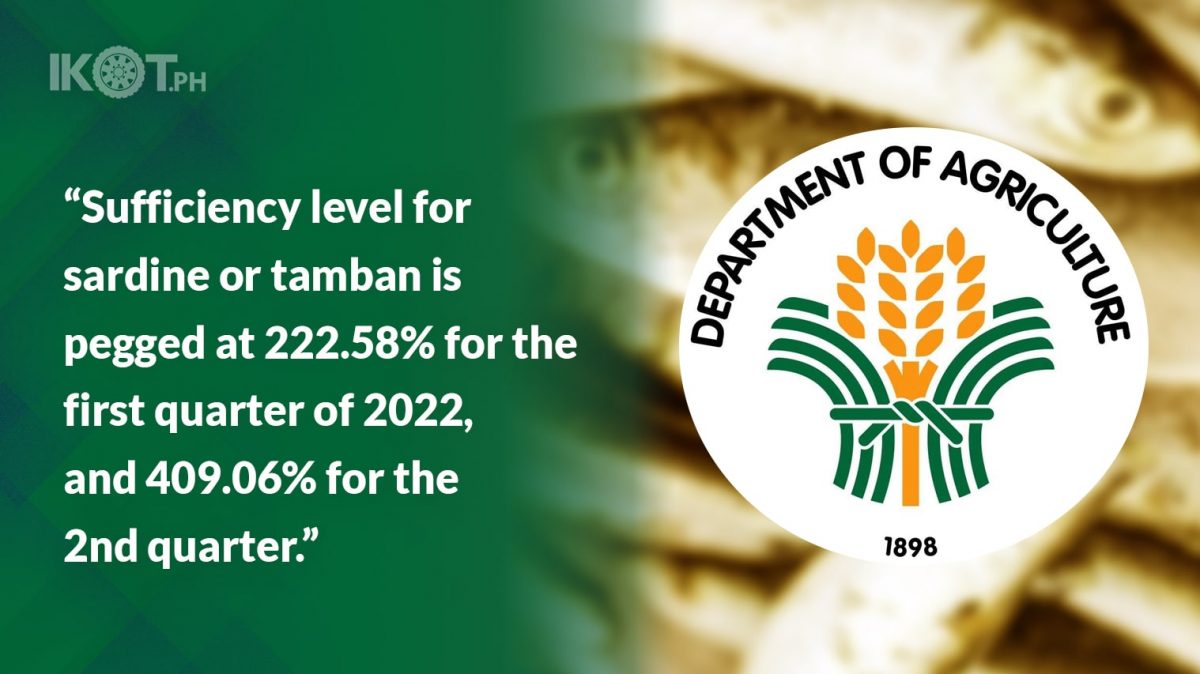The country remains sardine-sufficient for the year.
Based on current data from both the Philippine Statistics Authority and the Department of Agriculture-Bureau of Fisheries and Aquatic Resources (DA-BFAR), the sufficiency level for sardine or tamban is pegged at 222.58% for the first quarter of 2022, and 409.06% for the 2nd quarter.
For this year, DA-BFAR forecasts annual production of 293,431 metric tons (MT), covering the national demand of 101,367 MT.
The volume, which is entirely sourced locally, comes from commercial and municipal fishers, at 208,387 MT and 85,043 MT share respectively.
“Sardine stock has significantly improved resulting in more sardines reaching maturity and appropriate catchable size.”
Furthermore, data from the National Stock Assessment Program of the National Fisheries Research and Development Institute (NFRDI) show that sardine stock has significantly improved resulting in more sardines reaching maturity and appropriate catchable size.
The stable supply is attributed to the effective implementation of the National Sardine Management Plan.
The stable supply is attributed to the effective implementation of the National Sardine Management Plan, a five-year plan which harmonizes all the policies and programs on sardines including conservation measures such as the closed fishing seasons.
Since its implementation in 2020, a notable improvement in production and supply was recorded.
With regard to the call by the Canned Sardines Association of the Philippines (CSAP) to open up the municipal waters to commercial fishing vessels in order to address the alleged looming shortage of sardines which is contrary to the existing sardine supply sufficiency data, the DA-BFAR reiterates that under Republic Act 10654 or the amended Philippine Fisheries Code, small and medium commercial fishing vessels may be allowed to operate within the 10.1 to 15 kilometers from the shoreline in the municipal waters provided that the local government unit enacts a municipal ordinance allowing their operation.
As the primary government agency mandated to manage the country’s fisheries and aquatic resources, DA-BFAR remains strongly committed to increasing production and ensuring fish sufficiency through sustainable means and without compromising the ecological integrity of our aquatic and marine environment.


